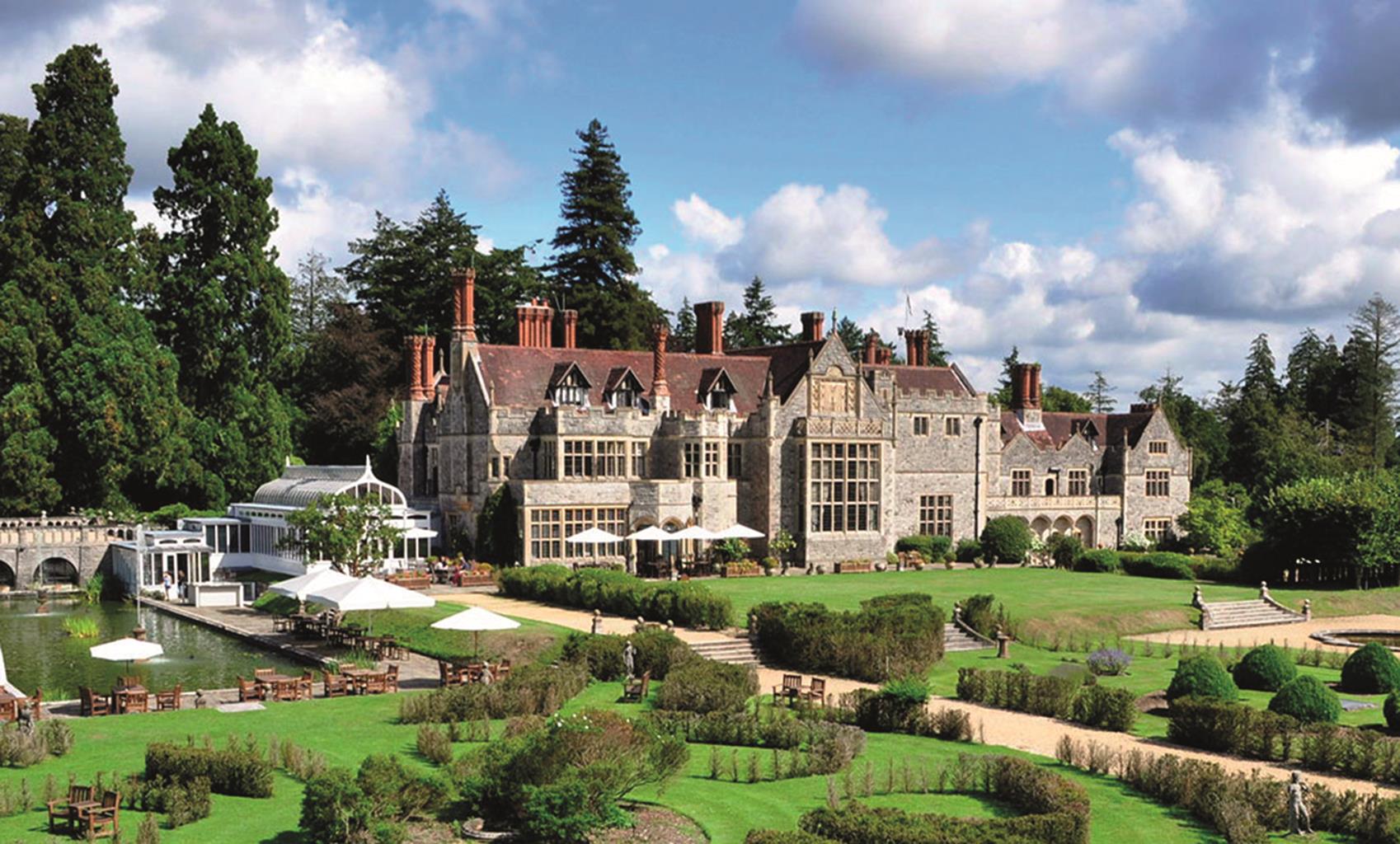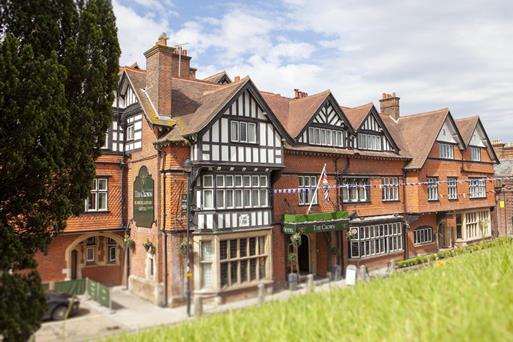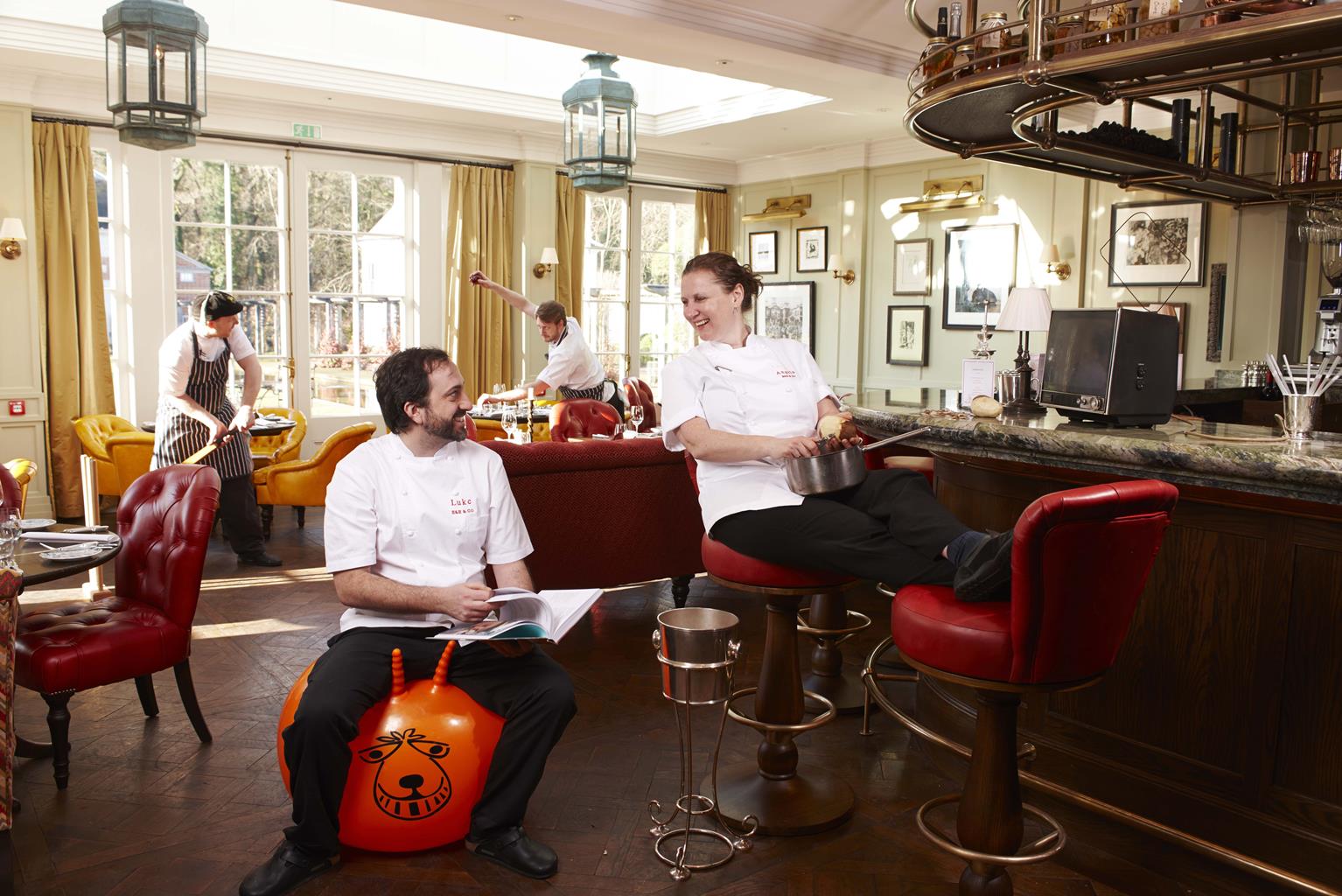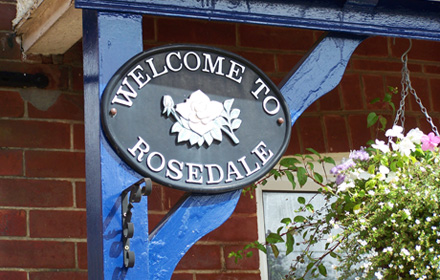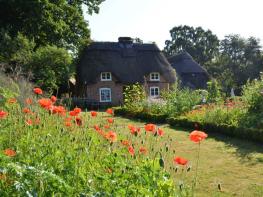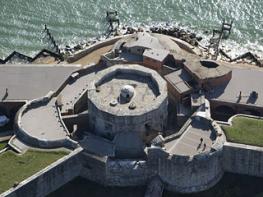Dating back in part to the 12th century, Rhinefield House is a remarkable example of Tudor-…
Discovering New Forest trails

Ancient oaks, historic enclosures and exotic towering conifers in the New Forest
9.5 miles (15.3kms)
About the walk
A short drive southwest of Lyndhurst are ancient woods of oak and beech, notably Bolderwood, and the 19th-century conifer plantation of the Rhinefield Ornamental Drive. You are in the heart of the New Forest and this walk explores these contrasting landscapes. A stroll through the rhododendron lined Ornamental Drive, with its magnificent tall trees and arboretum, takes you through the forest’s finest unenclosed and ‘inclosed’ deciduous woods.
Finest Relics of Woodland
Unenclosed woodlands such as Whitley Wood are among the finest relics of unspoilt deciduous forest in Western Europe. Hummocky green lawns and paths meander beneath giant beech trees and beside stands of ancient holly and contorted oaks. Inclosures are managed woodlands where young trees are protected from deer and ponies. Areas of oak trees were first inclosed in the late 17th century to provide timber for the construction and shipbuilding industries. Holidays Hill Inclosure, dating from 1676, contains 300-year-old oak trees that matured after iron replaced wood in the shipbuilding industry. Marvel at the 24ft (7.3m) girth of the most famous and probably the oldest tree in the forest, the Knightwood Oak, near the start of the walk. Believed to be 350 years old, it owes its great age to pollarding (cutting back) its limbs to encourage new branches for fuel and charcoal. Pollarding was made illegal in 1698 as fully grown trees were needed to provide timber for shipbuilding, so any tree that shows signs of having been pollarded is of a great age.
Close to Millyford Bridge and Highland Water is the Portugese Fireplace, a memorial to a Portugese army unit, deployed during World War I to cut timber for pit-props. The flint fireplace was used in their cookhouse. Returning through Holidays Hill Inclosure you will join a ‘reptile trail’ and several marker posts, each carved with a British reptile, lead you to the Reptile Centre. Set up to breed rarer species for the wild, including the smooth snake and sand lizard, it allows you to view some of the forest’s more elusive inhabitants.
Walk directions
Locate the Tall Trees Trail post at the southern end of the car park and follow the path to the road and cross straight over. Keep to the gravel trail (marked by white-banded posts) as it curves right and runs parallel with the road. Pass through an impressive mixed wooded area. The path meanders gently downhill to Blackwater car park, passing several sculptured information panels along the way. At the car park turn right through the rustic arch, cross the road and follow the track towards the arboretum. Go through a gate into the arboretum. Exit by the far gate and keep to the gravel track to a crossing of tracks. Turn right at waymarker post 244 and keep ahead on this track, ignoring paths left and right.
As the path bends to the right, take the grassy path on the left, emerging at the junction of roads. Cross over the A35 (take care), go through a gate and follow the road to a car park. Turn right, opposite the car park and follow the well-defined path to the Knightwood Oak.
Return through the gate to the triangle of tracks. Bear left and follow this to the New Forest Reptile Centre (seasonal opening). Walk along the access drive past a cottage dated 1811 then, at a barrier on your left 0.5 miles (800m) further on, drop down onto a path and follow it across a bridge.
Return through the gate to the triangle of tracks. Bear left and follow this to the New Forest Reptile Centre. Walk along the access drive past a cottage dated 1811 then, at a barrier on your left 0.5 miles (800m) further on, drop down onto a path and follow it across a bridge.
Keep to the main path for 0.75 miles (1.2km), skirting the walls to Allum Green. Keeping right, cross deeply rutted old forestry tracks in a clearing, and follow a wide grassy path that narrows and gently climbs through trees to a defined crossing of paths and turn right just beyond a large, scorched fallen tree and a ford. Bear slightly right across a clearing and concrete footbridge, then continue through the woodland to a stile beside a gate. Cross the stile to reach the A35.
Cross the road and take the lane into Bank to reach The Oak Inn. Continue on the lane through the hamlet.
Just beyond the cattle grid, turn right through a gate onto a gravelled cycle track. Follow this track for nearly a mile (1.6km) through a gate to an open area. Continue ahead on main track as it bears right to a junction at a small green.
Fork right, and enter Hursthill Inclosure at a gate. Drop down past a turning on the right, then climb again and bear left at a fork. Keep to the waymarked track as it drops past another turning on the right and leaves the inclosure at a gate. Walk over a large wooden bridge next to a ‘dead’ forest on your left and along the straight track to the bridges over Highland Water, and follow the track around to the right. Soon a gate leads into Poundhill Inclosure, and another straight section brings you to a five-way junction at waymarker post 250.
Turn right here. Ignore all turnings and follow the track as it turns sharp right and winds its way to a junction with Rhinefield Ornamental Drive. Turn left for the last 100yds (91m) back to the car park.
Additional information
Grass and gravel forest tracks, heathland paths, some roads
Ornamental Drive, ancient forest inclosures and heathland
Keep dogs under control at all times
OS Explorer OL22 New Forest
Brock Hill Forestry Commission car park, just off A35
Blackwater car park
WALKING IN SAFETY
Read our tips to look after yourself and the environment when following this walk.
Find out more
Also in the area
About the area
Discover Hampshire
Hampshire’s varied landscape of hills and heaths, downlands and forests, valleys and coast is without rival in southern England. Combine these varied landscapes and terrains with secluded and idyllic villages, complete with thatched and timber-framed cottages and Norman churches, elegant Georgian market towns, historic ports and cities, restored canals and ancient abbeys, forts and castles, and you have a county that is paradise for lovers of the great outdoors.
If you’re a walker, stride out across the high, rolling, chalk downland of the north Hampshire ‘highlands’ with far-reaching views, walk through steep, beech-clad ‘hangers’ close to the Sussex border. Or perhaps take a gentler stroll and meander along peaceful paths through unspoilt river valleys, etched by the sparkling trout streams of the Test, Itchen, Avon and Meon. Alternatively, wander across lonely salt marshes and beside fascinating coastal inlets or, perhaps, explore the beautiful medieval forest and heathland of the New Forest, the jewel in Hampshire’s crown.
Nearby stays
Restaurants and Pubs
Nearby experiences
Recommended things to do
Why choose Rated Trips?
Your trusted guide to rated places across the UK
The best coverage
Discover more than 15,000 professionally rated places to stay, eat and visit from across the UK and Ireland.
Quality assured
Choose a place to stay safe in the knowledge that it has been expertly assessed by trained assessors.
Plan your next trip
Search by location or the type of place you're visiting to find your next ideal holiday experience.
Travel inspiration
Read our articles, city guides and recommended things to do for inspiration. We're here to help you explore the UK.



